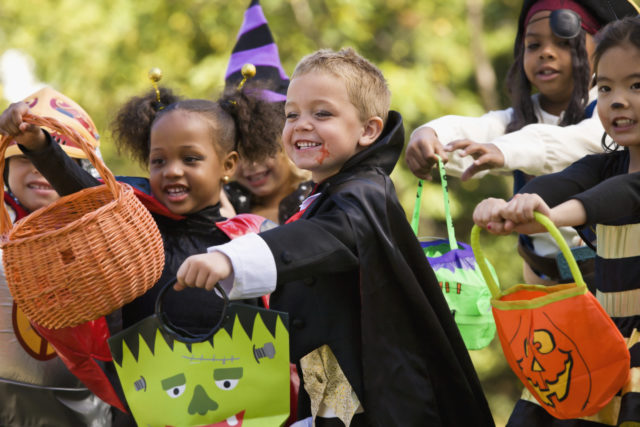By Bob Shepard
UAB News
Keeping kids, teens and even adults safe over the Halloween holiday can be a daunting task — a 2010 study in Pediatrics showed that Halloween had the fourth-highest number of emergency room visits among holidays, and children ages 10-14 had the most injuries, over 30 percent of the total. Experts from the University of Alabama at Birmingham weigh in with tips on how to stay safe this year.
“There is no one primary cause for Halloween-related injuries,” said David Schwebel, Ph.D., professor in the Department of Psychology and director of the UAB Youth Safety Lab. “Ill-fitting costumes can cause falls and obstruct vision, trick-or-treating in the dark can create risks for pedestrians, and wielding a knife to carve the jack-o’-lantern presents its own set of problems.”
Schwebel says parents need to set expectations for their trick-or-treating children regarding when and where they can go, making sure children are not out late unsupervised.
“It should be a fun time for families and friends, but safety is important too,” he said. “Parents need to take safety into consideration.”
According to Andrew Pucker, O.D., Ph.D., assistant professor in the School of Optometry, there are an estimated 1,000 or more emergency room visits per year associated with decorative contact lenses, which are very popular at Halloween.
“Patients should wear only contact lenses prescribed by a licensed eye care professional,” Pucker said. “Poorly fitted lens and improper lens care are associated with potential vision risks. Overall, we urge our patients to use common sense and make safe choices while they are having their Halloween fun.”
“Elaborate costumes, especially masks, can dramatically curtail peripheral vision, which is very important when crossing a street or navigating fences and landscaping between houses,” said Callahan Eye Hospital’s Shilpa Register, O.D., Ph.D., Department of Ophthalmology and Visual Sciences. “The U.S. Food and Drug Administration recommends makeup rather than masks, but remember to test it on a small spot first to confirm there are no allergic reactions.”
Keep this checklist handy:
- Always accompany young children when they go trick-or-treating.
- Stay in familiar, well-lighted areas, and plan your route.
- Visit only homes that have porch or outside lights turned on.
- Carefully check for signs of tampering before eating treats.
- Use flashlights when trick-or-treating.
- Attach strips of reflective tape to your child’s costume.
- Make sure hats, masks or other headgear cannot slip down over your child’s eyes.
- Use fire-resistant material for all homemade costumes.
- If you use a mask, make sure it fits snugly, and cut the eye holes large enough to allow full vision.
- Do not let kids wear mom’s or dad’s shoes. Dress them in shoes that fit, so they remain stable on their feet.
- Do not cut across lawns. Ornaments and clotheslines are hard to see in the dark. Stay on sidewalks and yard walkways.
- Falls are the leading cause of injury on Halloween. Costumes and unfamiliar neighborhoods contribute to falls.
- Remind children to stop and look left, right and left again before crossing a street.
- Be careful driving. Slow down, and keep an eye out for roaming ghosts and goblins.





